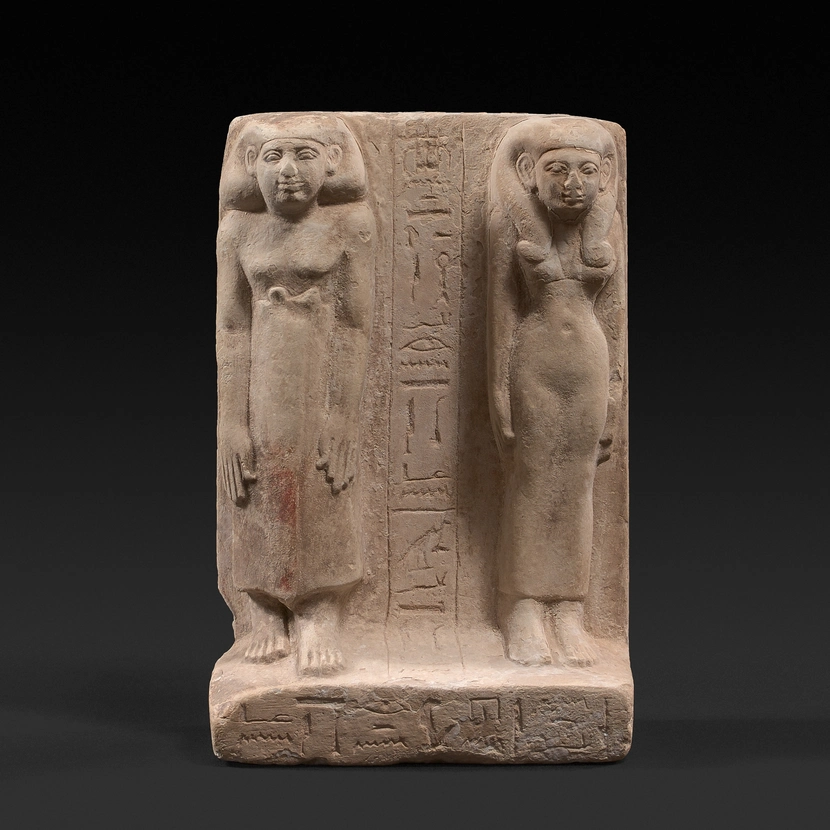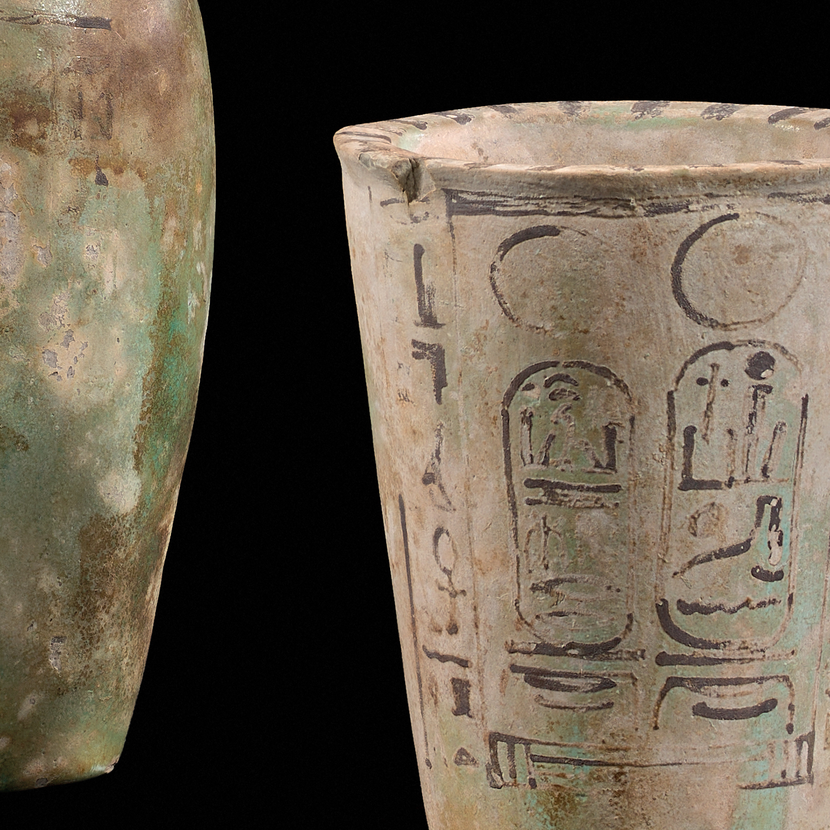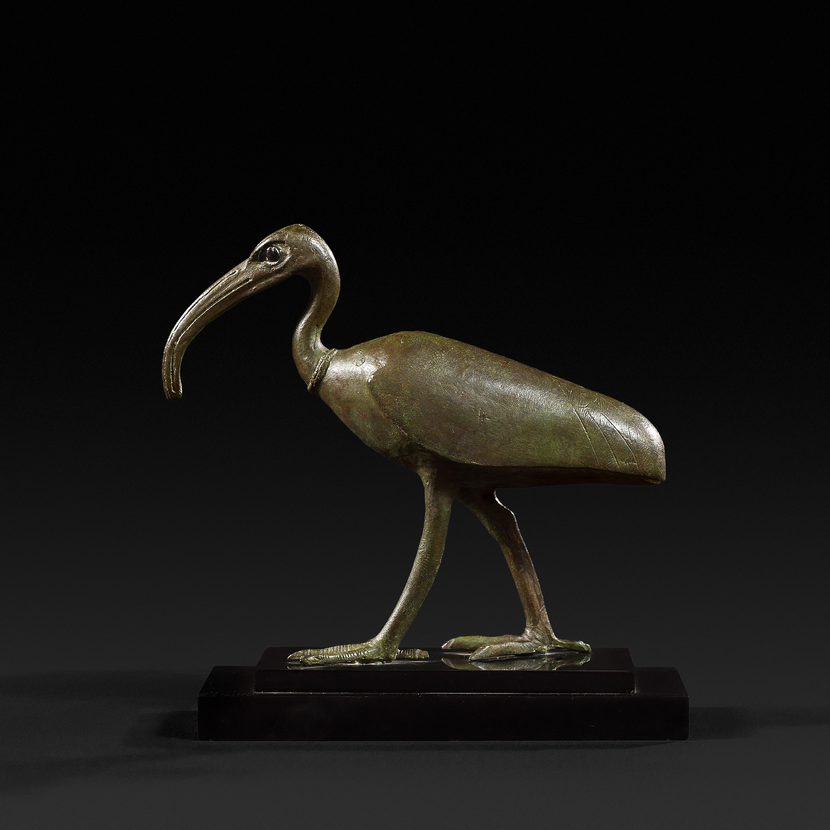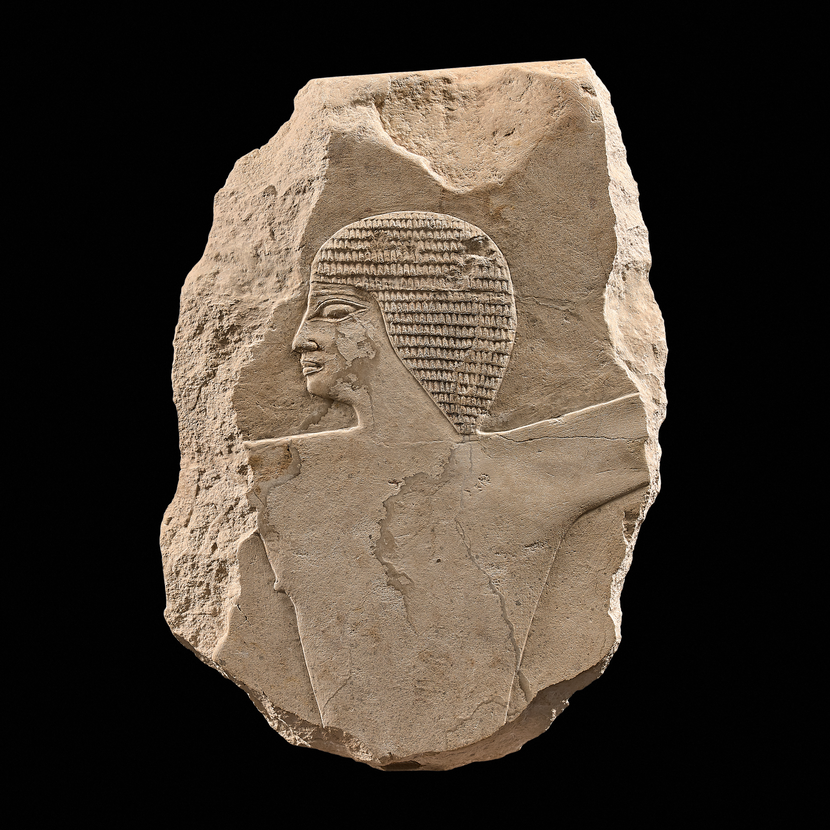Groupe statue
Group statue depicting a couple standing side by side. The woman, dressed in a long, form-fitting sheath dress, stands with her arms at her sides. To her right, the man, is shown stepping forward with his left foot. He wears a long kilt featuring a folded-over pleat in the front, a style caracteristic of the Middle Kingdom.
Egypt
Middle Kingdom , 2040-1782 BC
Limestone
Height 15 cm ( 5 7⁄8 in )
Width 10 cm ( 3 7⁄8 in )
Former private collection Ayoub Rabenou (1902-1984), hence by descent to his grandchildren
H.G. Evers: Staat aus dem Stein: Denkmäler, Geschichte und Bedeutung der ägyptischen Plastik während des Mittleren Reichs, München 1929
B. Fay: Egyptian Museum Berlin, Mainz, 1990, p.36, no. 19.
A. Oppenheim & D. Arnold & K. Yamamoto: Ancient Egypt Transformed, The Middle Kingdom, New York, 2015
M. Saleh & H. Sourouzian: The Egyptian Museum Cairo, Official Catalogue, Mainz am Rhein 1987
J. Vandier : Manuel d’archéologie égyptienne, Tome III, Les grandes époques, La statuaire, Paris 1958
A. Schweitzer &C. Traunecker: Inventaire des collections publiques françaises, Strasbourg, Musée archéologique - Antiquités égyptiennes de la collection G. Schlumberger, Paris 1998
Group statue depicting a couple standing side by side. The woman, dressed in a long, form-fitting sheath dress, stands with her arms at her sides. To her right, the man, is shown stepping forward with his left foot. He wears a long kilt featuring a folded-over pleat in the front, a style caracteristic of the Middle Kingdom. His open hands rest on his thighs. Both figures stand on a rectangular base supported by a back pillar. The front face of the pilar is engraved with two lines of hieroglyphic text, while the dorsal pilarbears eight lines of text referencing the couple’s family.
The man, positioned on the right, has a broad face with high cheekbones, a large nose and a wide mouth. His shoulder-length bag-wig leaves his ears uncovered. He wears a long kilt, knotted above his flat stomach, which extends to his ankles. His almost rectangular feet are visible beneath the kilt, with each toe and toenail meticulously carved.
The woman’s facial features mirror the man’s but are more delicate. Her elongated almond-shaped eyes and her round face convey grace and femininity. She wears a tripartite wig that falls over her shoulders and curl upwards on her chest, leaving her ears uncovered. Her garment, a long, sheer gown clinging closely to her body, emphasizes her youthful and idealized form, with details such as a pronounced navel, the median line of the torso, and her breasts. Compared to the male figure, the woman’s representation more clearly embodies the Egyptian ideal of eternal youth and vitality.
As early as the Old Kingdom period, during the time of the first pyramids, Egyptian art established conventions for representing individuals—whether as solitary figures or couples—standing or seated. A typical feature of these representations was the inclusion of a back slab for structural support, which often bore inscriptions of the names and titles of the individuals depicted (pharaohs, high priests, officials, courtiers, and dignitaries). This traditional composition continued into the Middle Kingdom and is evident in the present statuette, which represents a couple of dignitaries. Despite the sculpture’s small scale, it showcases numerous individualized details and a high level of precision in the carving of the hard stone.
Miniature family portraits like this one gained popularity in Egyptian art towards the end of the Middle Kingdom. These statuettes, initially exclusive to royalty, were increasingly included in the tombs of other social groups. Furthermore, such statues were often dedicated to the sanctuaries of gods or deified ancestors, serving as stand-ins for their owners in religious rituals and cult practices.







